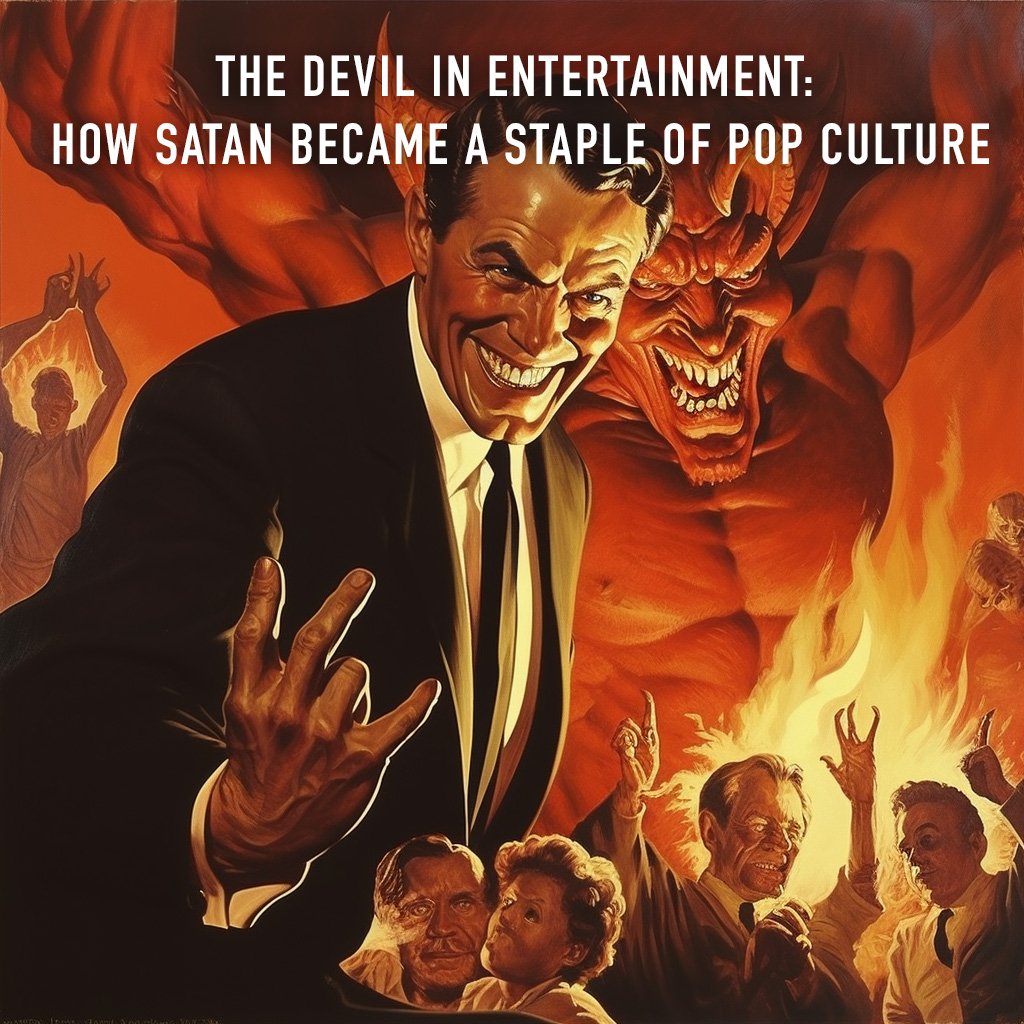Satan in Popular Culture
Title: The Devil in Entertainment: How Satan Became a Staple of Pop Culture
Introduction:
Since time immemorial, mankind has been fascinated by stories of good versus evil. The embodiment of evil, the Devil, has captivated people’s imaginations for centuries, deeply rooted in religious lore and moral teachings. However, it is in the realm of entertainment and popular culture where Satan has emerged as an enduring and influential figure. From literature to film, music to video games, the Devil’s presence permeates various mediums, intriguing audiences across the globe. This article explores how Satan became a staple of pop culture and the enduring allure he holds over our collective imagination.
Historical Origins:
The concept of Satan stems from ancient religious beliefs, particularly in Christianity, Islam, and Judaism. Traditionally depicted as a malevolent being tempting humans to sin, the Devil personifies the ultimate embodiment of evil. Literature like Dante’s “Inferno” and John Milton’s “Paradise Lost” codified the character, popularizing him among the masses. These works showcased Satan as a seductive, cunning, and charismatic figure, making him all the more compelling to audiences.
Influence in Literature:
Satan’s influence expanded even further with the rise of literary works throughout history. Authors recognized the potency of Satan as a character, employing him in various narratives to explore complex themes and challenge societal norms. Classic novels like “The Picture of Dorian Gray” by Oscar Wilde and “Faust” by Johann Wolfgang von Goethe featured the Devil as a catalyst of personal temptation, offering Faust and Dorian Gray a Faustian bargain. These stories delved into the human desire for power, immortality, and unfettered pleasure, showcasing Satan as the agent of transformation.
Cinematic Enchantment:
The transition from print to the silver screen elevated Satan’s presence in popular culture like never before. Movies like “The Exorcist” and “Rosemary’s Baby” resonated with audiences by capitalizing on society’s fascination with the supernatural, demonic possession, and the age-old battle between good and evil. Furthermore, the portrayal of Satan as a charismatic figure mesmerized audiences in films like “The Devil’s Advocate” and “Angel Heart,” where his allure leads humans astray, providing gripping narratives to explore the dark side of human nature.
Musical Temptations:
From rock ‘n’ roll to heavy metal, music has also embraced the mystique of the Devil. Artists such as Robert Johnson, who supposedly sold his soul to the Devil at a crossroads, or renowned bands like Black Sabbath and Iron Maiden, have drawn inspiration from Satan’s legendary influence. These musical expressions enabled artists to explore themes of rebellion, counterculture, and personal transformation while captivating audiences with the Devil’s provocative presence in their lyrics and performances.
The Digital Age:
With the advent of video games, the Devil’s influence has seeped into the interactive realm, challenging players to confront their darkest desires and fears. Titles like “Doom,” where players must battle hordes of demons, and the iconic “Devil May Cry” series, featuring a demon hunter as the protagonist, have allowed gamers to experience thrilling encounters with Satan’s minions firsthand. This interactive medium offers a unique exploration of moral choices, challenging players to grapple with the blurred lines between good and evil.
Conclusion:
From ancient religious texts to today’s entertainment landscape, the Devil’s role in pop culture and our collective imagination is undeniable. The allure of Satan as a figurehead of temptation, transformation, and rebellion continues to captivate audiences across various mediums. Whether through literature, film, music, or video games, creators have utilized Satan’s character to explore complex themes and challenge societal norms. While the Devil’s impact in entertainment may raise eyebrows for some, it undoubtedly adds depth, intrigue, and eternal fascination to our cultural tapestry.
#Devil #Entertainment #Satan #Staple #Pop #Culture


